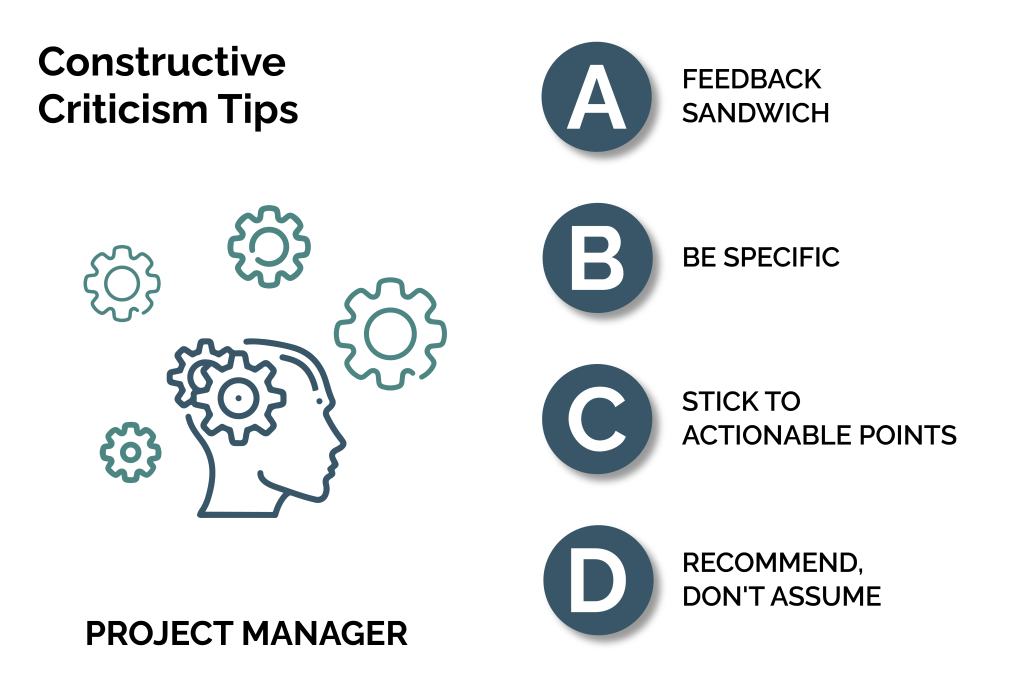There are many ways designers can give and receive criticism. However, to ensure that this criticism is a help rather than a hindrance, we need to understand how constructive criticism works in the UX design field.
Criticism is inevitable. It doesn’t matter what industry you are in; criticism will form part of your career path. However, it can be a double-edged sword. Listening too much to criticism can negatively impact your thought process and actions. But, equally, not taking in any criticism may prove detrimental, and you may not be able to evolve as a designer. Therefore, it is essential to understand the positive aspects of criticism and how to use it to inform your work. Furthermore, listening to constructive criticism will often result in a more robust project that fulfills all clients’ requests.
Constructive criticism helps:
- By increasing the collaborative spirit within design teams
- By allowing individual designers to grow and learn from other experts
- By enabling designers to gain some perspective and distance themselves from their work
- By creating greater empathy for other designers and the potential users of the designs
Let’s look at how you can receive and provide criticism successfully in the world of design.
The Art of Receiving Criticism
There is always more to learn. Even when you’re happy with a design, there will be ways to iterate and improve. Taking and constructively using criticism you know as you gain more experience as a designer. At the beginning of your career, it may be difficult to take criticism, and you may respond negatively. This is usually because beginners lack confidence. However, receiving criticism allows you to evolve as a designer and incorporate the expertise of others into your designs.
Some things to remember when receiving constructive criticism:
- Collaboration means compromise: When designing a product, service, or software, it would be best to compromise, especially when working within a design team. Often, you will learn from the insights and critiques of other experienced designers.
- Keep your response positive: A positive frame of mind is key to receiving criticism. Every interaction should be geared towards creating the best possible design.
- The client is correct: Sometimes, you must accept that they know what they are talking about. In the end, they will decide whether your design is a success. Listen to them, and you’ll be able to hit your targets.
- Gain some perspective: Your work is not an extension of you. A criticism of your design work is not an implicit criticism of you or your overall design knowledge/style. If the person giving the criticism is well-intentioned, their words will be constructive and solely focused on improving the product.

Providing Constructive Criticism
As well as receiving criticism, there will be times in your design career when you will have to give criticism. You may have learned how to do this at school. Now it’s time to take those learnings and apply them to a professional design environment. Critiquing other people’s work will help you realize the flaws and merits of your work. Additionally, by providing constructive criticism, you will encourage other designers and help improve their designs.
Some things to remember when providing criticism:
- Maintain a professional and friendly tone: The way you provide the criticism is almost as important as the criticism itself. Remember to be uplifting rather than harsh. Co-workers will more readily accept your criticisms if they know that your thoughts are well-intentioned.
- Only provide criticism when asked or when it seems necessary: Don’t be annoying with your critiques. But, on the other hand, they shouldn’t be incessant and should hopefully be given only when necessary or when the designer asks for help.
- Emphasize the positives: Constructive criticism should not be harmful. Instead, make sure to highlight the positive attributes of the design and carefully describe points where the design could be improved.
 Becoming better designers
Becoming better designers
Design can be both a collaborative and individual process. Learning the value of constructive criticism will help you excel in your design efforts, making you a better team member. The art of receiving criticism will take some time to master, but it will invariably result in you taking a closer and more productive look at your work. Similarly, providing constructive criticism will improve your analytical and evaluative skills. Ultimately, understanding the role of criticism in the design process will help you attain better solutions in your future projects.
Want to know how you can attain better solutions? Learn how receiving and providing constructive criticism can help make you and your peers better designers here at Radiant Digital.

